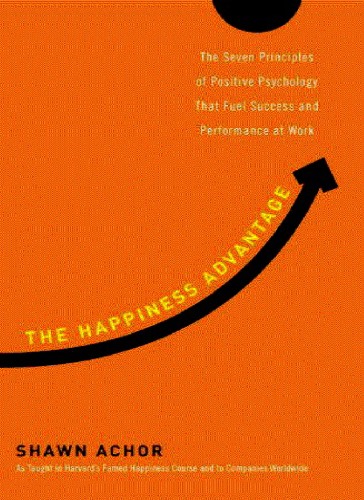- 2 402 202 книги
- Поиск
libcats.org









Measuring the Cosmos: How Scientists Discovered the Dimensions of the Universe
David H. Clark, Matthew D.H. ClarkI noticed that this book, which was published in 2004, had not yet received even one customer review. I read a news story recently that on-line reviews tended to skew to extremes, the reviewers either hate the item or love it; those who are neutral don't bother to write a review. This might explain the reception for this book.
There is nothing particularly objectionable about this book, but nothing grabbing and inspiring. If there is one overarching problem with this book, it is that author does not seem to have an audience in mind. For instance, at one point he informs us that Einstein was the greatest scientist of the Twentieth Century. My main objection to this assertion is not its truth or falsity. Rather, a reader in 2004 who has not formed an idea of the place of Einstein in the pantheon of Twentieth Century science has absolutely no business reading a book with this title. The sentence "Einstein was the greatest scientist of the Twentieth Century." falls off the page like lead. The reader has already heard of Einstein, trust me.
The book is divided into six chapters, covering material in more or less chronological order. Despite this the book lacks coherence and flow. Chapter 6 brings the reader into the 21st Century, and reprises and outlines the progress in measuring the cosmos from parallax to the latest determination of the Hubble constant. If the synopsis in Chapter 6 had been used as an outline of the book, it would have been a better book. Chapter 6 is also the best chapter in the entire book. The writing in the first half of the book is flat, almost perfunctory, as if the author just wants to get through it, so he can get to last (and did I mention best?) chapter.
In the rush, fascinating topics, like the Greek attempts to measure the earth and thence the distance to the moon and the sun are either given short shrift or completely ignored. No mention is made of attempts to determine the astronomical unit, nor does he define the astronomical unit anyplace in the book, even in the glossary. He is apparently writing for someone who knows what an astronomical unit is, but has never heard of Einstein. Nor is the story of parallax given the attention it deserves. I don't think a reader whose only introduction to the topic was this book would have any idea of the role of parallax in determining cosmic distances.
There is also a regrettable amount of bowing and scraping to modern liberal pieties. One can lament the unfortunate treatment of Henrietta Swan Leavitt without unwarranted and distracting kneeling to the feminist narrative. I would have preferred a more straightforward presentation of the facts, with a mention of the unjustifiably subordinate role of women in 19th Century science and an appreciation of the achievements of Miss Leavitt and her contemporaries.
The treatment of the Galileo-Vatican controversy is in the same vein. The book states that the Pope thought he saw himself in the doltish character of Simplicius in Dialogues. This might be related to the fact that Galileo intended it that way. After Pope Urban VIII asked Galileo a few reasonable questions about the treatment of tides in the manuscript version of Dialogues, Galileo promised to clear it up in the final version. Galileo placed the Pope's questions in the mouth of Simplicius, only to have the all-wise character of Salviati dismissively swat them aside. It is an embarrassment for Galileo's defenders that Galileo shows absolutely no understanding of the mechanism of tides, whose explanation would have to await Newton. The Pope's question was completely reasonable and Galileo's response was not. Today's readers might take academic freedom and free speech for granted. To say that these concepts were foreign to the Renaissance Vatican would be an understatement. But they were equally foreign to every other civilization and institution that had ever existed anyplace on the earth up to that time. To judge the Renaissance Vatican by contemporary standards is an act bording on solipsism.
Overall, not a bad book, but a disappointing one. And in preempting the title the author may have discouraged a better one.
There is nothing particularly objectionable about this book, but nothing grabbing and inspiring. If there is one overarching problem with this book, it is that author does not seem to have an audience in mind. For instance, at one point he informs us that Einstein was the greatest scientist of the Twentieth Century. My main objection to this assertion is not its truth or falsity. Rather, a reader in 2004 who has not formed an idea of the place of Einstein in the pantheon of Twentieth Century science has absolutely no business reading a book with this title. The sentence "Einstein was the greatest scientist of the Twentieth Century." falls off the page like lead. The reader has already heard of Einstein, trust me.
The book is divided into six chapters, covering material in more or less chronological order. Despite this the book lacks coherence and flow. Chapter 6 brings the reader into the 21st Century, and reprises and outlines the progress in measuring the cosmos from parallax to the latest determination of the Hubble constant. If the synopsis in Chapter 6 had been used as an outline of the book, it would have been a better book. Chapter 6 is also the best chapter in the entire book. The writing in the first half of the book is flat, almost perfunctory, as if the author just wants to get through it, so he can get to last (and did I mention best?) chapter.
In the rush, fascinating topics, like the Greek attempts to measure the earth and thence the distance to the moon and the sun are either given short shrift or completely ignored. No mention is made of attempts to determine the astronomical unit, nor does he define the astronomical unit anyplace in the book, even in the glossary. He is apparently writing for someone who knows what an astronomical unit is, but has never heard of Einstein. Nor is the story of parallax given the attention it deserves. I don't think a reader whose only introduction to the topic was this book would have any idea of the role of parallax in determining cosmic distances.
There is also a regrettable amount of bowing and scraping to modern liberal pieties. One can lament the unfortunate treatment of Henrietta Swan Leavitt without unwarranted and distracting kneeling to the feminist narrative. I would have preferred a more straightforward presentation of the facts, with a mention of the unjustifiably subordinate role of women in 19th Century science and an appreciation of the achievements of Miss Leavitt and her contemporaries.
The treatment of the Galileo-Vatican controversy is in the same vein. The book states that the Pope thought he saw himself in the doltish character of Simplicius in Dialogues. This might be related to the fact that Galileo intended it that way. After Pope Urban VIII asked Galileo a few reasonable questions about the treatment of tides in the manuscript version of Dialogues, Galileo promised to clear it up in the final version. Galileo placed the Pope's questions in the mouth of Simplicius, only to have the all-wise character of Salviati dismissively swat them aside. It is an embarrassment for Galileo's defenders that Galileo shows absolutely no understanding of the mechanism of tides, whose explanation would have to await Newton. The Pope's question was completely reasonable and Galileo's response was not. Today's readers might take academic freedom and free speech for granted. To say that these concepts were foreign to the Renaissance Vatican would be an understatement. But they were equally foreign to every other civilization and institution that had ever existed anyplace on the earth up to that time. To judge the Renaissance Vatican by contemporary standards is an act bording on solipsism.
Overall, not a bad book, but a disappointing one. And in preempting the title the author may have discouraged a better one.
Скачать книгу бесплатно (pdf, 926 Kb)
Читать «Measuring the Cosmos: How Scientists Discovered the Dimensions of the Universe»
Читать «Measuring the Cosmos: How Scientists Discovered the Dimensions of the Universe»
EPUB | FB2 | MOBI | TXT | RTF
* Конвертация файла может нарушить форматирование оригинала. По-возможности скачивайте файл в оригинальном формате.
Популярные книги за неделю:

Проектирование и строительство. Дом, квартира, сад
Автор: Петер Нойферт, Автор: Людвиг Нефф
Размер книги: 20.83 Mb

Система упражнений по развитию способностей человека (Практическое пособие)
Автор: Петров Аркадий НаумовичКатегория: Путь к себе
Размер книги: 818 Kb

Сотворение мира (3-х томник)
Автор: Петров Аркадий НаумовичКатегория: Путь к себе
Размер книги: 817 Kb

Радиолюбительские схемы на ИС типа 555
Автор: Трейстер Р.Категория: Электротехника и связь
Размер книги: 13.64 Mb
Только что пользователи скачали эти книги:

Военный летчик
Автор: Экзюпери Антуан Де СентКатегория: Классическая проза, О войне
Размер книги: 458 Kb

Черные дыры, гравитационные волны и космология
Автор: Рис М., Автор: Руффини Р., Автор: Уилер Дж.
Размер книги: 6.60 Mb

Biologic Markers in Immunotoxicology
Автор: Subcommittee on Immunotoxicology, Автор: Committee on Biologic Markers, Автор: Board on Environmental Studies and
Размер книги: 1.64 Mb

New Perspectives on Romance Linguistics: Morphology, Syntax, Semantics, and Pragmatics : Selected Papers from the 35th Linguistic Symposium on Romance Languages (LSRL), Austin, Texas, February 2005
Автор: Chiyo Nishida, Автор: Jean-Pierre Y. MontreuilКатегория: Языкознание
Размер книги: 2.02 Mb

The Happiness Advantage: The Seven Principles of Positive Psychology That Fuel Success and Performance at Work
Автор: Shawn AchorКатегория: Психология
Размер книги: 1.38 Mb





